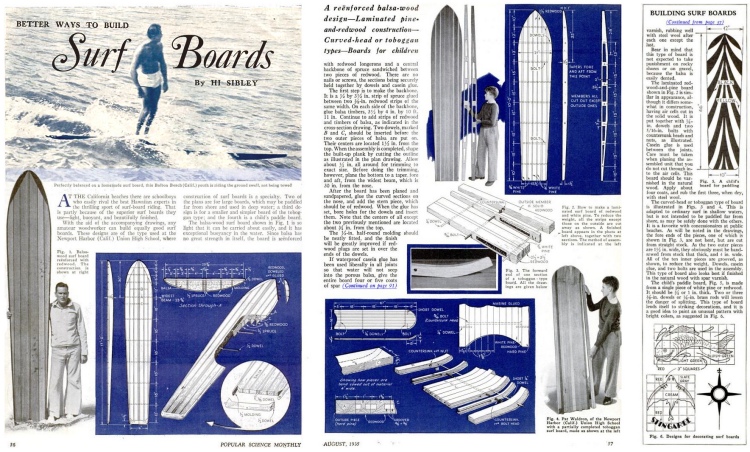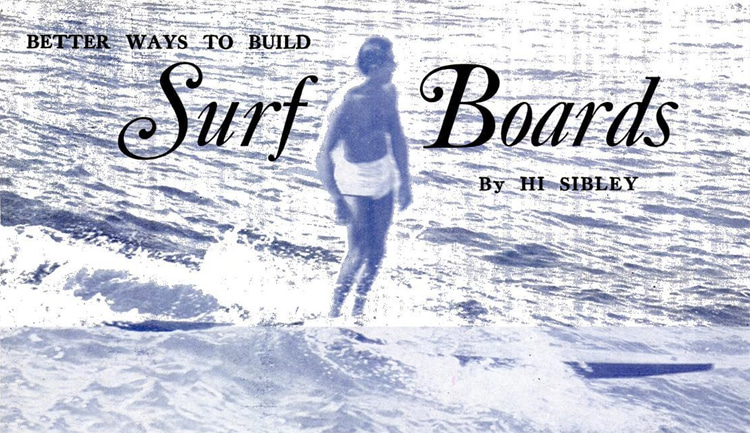"At the California beaches, there are schoolboys who easily rival the best Hawaiian experts in the thrilling sport of surfboard riding.
That is partly because of the superior surfboards they use - light, buoyant, and beautifully finished".
The opening lines of "Better Ways to Build Surfboards," a 1935 article published in the famous "Popular Science" magazine, are simply delicious.
The entire text by Hi Sibley explains how to build a surfboard with reinforced balsa wood and laminated pine-and-redwood to an ordinary citizen.
Back in 1935, handmade drawings were crucial to designing the best surfboards possible.
Shaping Priorities
The concept of "shaping" had other priorities. For example, the materials' size, thickness, and overall hydrodynamics assumed different functions and final results in a wave.
Interestingly, building a surfboard was something the average non-surfer could create, according to the publishers of "Popular Science."
If you had the proper "foam" and a few math skills, you could get your first surfboard for riding Californian waves.
It is also interesting that surfing was showing signs of high popularity.
Publishing a two-page article about surfboards in a science magazine was a huge hit for the surfing community.
"Better Ways to Build Surfboards" is an excellent piece of surf history. It deserves a closer look.
Find the details and, why not, try for yourself - learn how to shape a surfboard.
Click on the following image to read it in high resolution.

